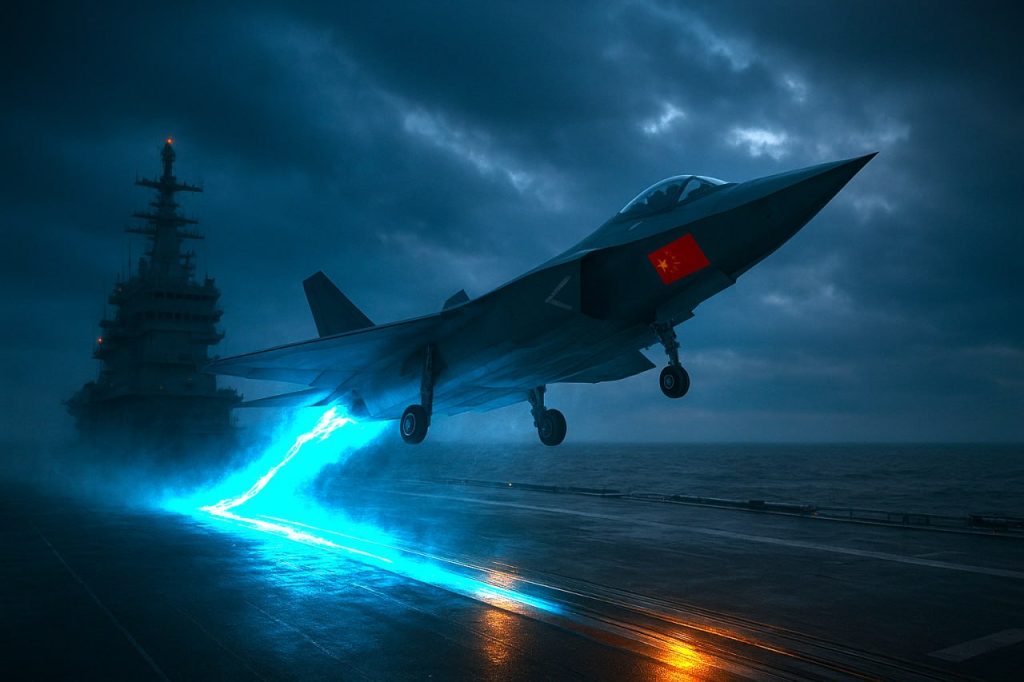The J-35 Launch Proves It: China Now Leads in Carrier Tech
 by New Rules [10-7-2025].
by New Rules [10-7-2025].
(RAD: This is a very interesting comparison. Although I don't know the constraints and decisions behind how the US designed their EM catapults, to design something so critical that one failure could shut down everything seems like an initial design failure. Regardless of what you think about the Chinese political system, it should be obvious that the Chinese have some very advanced engineering skills in this & other areas. — RAD)
China’s Fujian carrier has successfully launched the stealth J-35 using an electromagnetic (EM) catapult — the world’s first operational pairing of a 5th-gen fighter with EM launch.
The US has tried for 12 years. Its Ford-class carriers introduced EMALS in 2012, yet F-35Cs still rely on old steam catapults. Now, China has leapfrogged the US in a core technology.
The US system is flawed.
EMALS catapults are wired in series — one failure can halt all flight ops. A 2019 report showed failures once every ~400 launches, ten times worse than design goals.
China’s approach is smarter:
🔸 Uses medium-voltage DC power with supercapacitors.
🔸 Catapults run in parallel — each independently powered. If one fails, it’s isolated in 0.8 s and the rest keep launching.
The result:


That reliability converts directly into combat power — sortie rate.


In battle, that’s decisive. A 12-jet strike package takes over 10 min to get airborne from a US carrier — while China’s can launch the full formation swiftly, preserving fuel and extending range.
Next comes manned-unmanned teaming. China’s “loyal wingman” drones are ready — and its superior EM system makes their integration seamless.
Bottom line:
By sidestepping US design traps and perfecting reliability, China has done in years what America hasn’t in a decade. The balance of naval air power is shifting east.